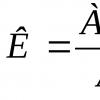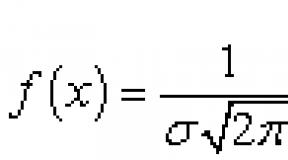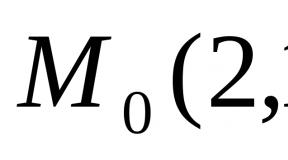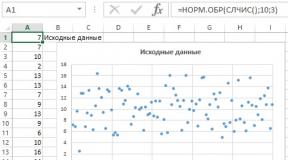Diet and nutrition in type 2 diabetes. What should it be?
Health 25.09.2016
Irina25.09.2016 Nutrition for type 2 diabetes
Dear readers, many of you are asking to talk about therapeutic nutrition for various diseases. We started this topic with the doctor Yevgeny Snegir, many people know him. Our topics with Eugene -. And today I am expanding the topic of therapeutic nutrition. We will talk about diet and nutrition in type 2 diabetes. With us is a doctor-endocrinologist, diabetologist, specialist in nutrition, nutrition and weight loss Lebedeva Dilyara Ilgizovna.
Good day, dear readers! As you probably know, the problem of diabetes is acute all over the world, and doctors are trying to cope with it, but so far it has not worked. The increase in the number of people with diabetes is steadily increasing exponentially.
Probably, the saying “Saving the drowning man is the work of the drowning man himself” is most welcome here, and I want to give you information for reflection that will help you understand your disease and help yourself in some way.
Scientists and doctors in the world do not have a common opinion on how to properly and effectively treat this disease. Their opinions and statements are quite often shaped by certain organizations that have no interest in your health. These are pharmaceutical companies, food manufacturing companies, and various lobbies, for example, agricultural ones.
I try not to succumb to this influence, I recommend to my patients the most optimal solutions to problems and prescribe medicines only as a last resort and according to indications.
And today you will learn more about my practical experience. Naturally, it is impossible to fit many years of knowledge into the format of one article; I write in more detail on my blog. Sugar is normal!

What is diabetes mellitus and how does it happen
Those who are more or less familiar with the topic of diabetes often think that there are only 2 types of this disease. But it's not. In fact, there are many variants and causes of the disease, but in the structure of diabetes, the same 2 types occupy the largest part: type 1 and type 2. The rest occur much less frequently, and are also often mistaken for the main ones listed.
The most common type of diabetes is type 2 diabetes, accounting for about 90% of all types of diabetes. Since the able-bodied and elderly population of the world falls ill with this variant, it is he who causes the close attention of all doctors.
In addition, recently this type of disease, previously considered incurable, can be successfully treated with timely detection. Therefore, developed countries are investing fabulous money in prevention and screening of their population.
So today in this article we will talk about this type of diabetes, namely nutrition, as a stumbling block and the basis of a cure at the same time.
Diet and nutrition in type 2 diabetes. What should it be?
Type 2 diabetes is characterized by excess weight and insulin resistance (tissue insensitivity to the hormone insulin). It rarely happens that there is no excess weight, but there is insulin resistance.
Quite often, adults without obesity and resistance, but with diabetes, are recorded in the ranks of type 2 diabetics. This is not true, as it will not be true type 2 diabetes and the approach to such patients is somewhat different. I am talking today about true type 2 diabetes, accompanied by obesity and insulin insensitivity.
Many underestimate the power of nutritional optimization, but for this category of patients, this is a real lifeboat.
In this section, you will learn about the general principles of diabetes nutrition and diet planning. Knowing these basic things, you can easily create your own menu for a few days.

Basic principles of nutrition in type 2 diabetes
What is the nutrition of a type 2 diabetic based on?
- Carbohydrate restriction
- Normal intake of proteins and fats
- Complete intake of vitamins, minerals and other essential active substances
Let's consider each item separately.
Carbohydrates in the diet for type 2 diabetes
Since diabetes mellitus is associated with impaired carbohydrate metabolism, which causes an increase in blood glucose levels, it would be logical to limit the intake of foods rich in carbohydrates. This may be a temporary measure, and for some it may become a lifetime recommendation. Everything is decided individually, and decisions are made in the process of long-term observation by a doctor.
Currently, at the appointment with the endocrinologist, patients receive recommendations to adhere to the so-called table number 9. In my practice and according to the reviews of blog readers, such a recommendation does not work at all.
Adhering to food according to table No. 9, a person continues to consume a large amount of carbohydrates, which prevent him from losing weight, normalizing glucose levels, feeling full and satisfied with food.
This suggests that you need to further reduce carbohydrates. Food is starting to move into the low-carb category.
Note that low carb does not mean no carb. A person is given a choice: a tougher option and a more liberal one.
These two options can be compared with an elevator and stairs in terms of efficiency and speed of normalization of the state.
In the first case, you will have fairly fast results, in the second case, the results will also be, but not so fast.
In a more stringent version, it is recommended to limit carbohydrates to 20-30 g per day. In a more liberal - the main thing is not to exceed 100 g per day. In my opinion, the average range is considered optimal, which ranges from 50 to 80 g of carbohydrates per day.
I would not advise you to immediately experiment with a harder option without the supervision of a doctor who understands this and is ready to help. This is a ketogenic diet option and is difficult for some people to follow because it requires special conditions and rules.
What you can do today is to count how many carbohydrates you eat and try to reduce to 100 grams per day if you eat more. If you already eat no more than 100 grams of carbohydrates, then try reducing it to 50-70 grams. Act gradually so as not to get a negative experience and abandon the effective method forever.
At first, there may be a lethargic, drowsy state. This is normal, because the body must adjust to the new regime and is deficient in energy. This condition can last up to 2-3 weeks, after which vigor and efficiency reappear.
Proteins in the diet of a diabetic with type 2
When we relatively dealt with carbohydrates, it was the turn of proteins and especially fats. As you understand, I recommend a low-carb eating style, where the amount of carbohydrates ranges from 10-20 g to 100 per day. How rigid your diet is with respect to carbohydrates depends on the intake of proteins and fats.
Since we've been told for decades that fatty foods are bad, that animal fats are to be avoided, many of you will begin to restrict both carbohydrates and fats, thus switching to a protein diet.
I want to protect you from this, since this is a deliberately dangerous path. Our body really needs proteins, but when it receives them in large quantities, proteins can become poison.
Remember a few rules regarding protein intake:
- A protein diet is used only as a short-term measure (no more than 2-4 weeks) and then in sports.
- At one meal, only 30-40 g of pure protein is absorbed from food, and the rest remains in the intestine, which is a favorable environment for the nutrition of pathogenic flora.
- Try to get at least 20% and no more than 25-30% of protein from your total food intake per day.
The norm of protein intake for an adult is as follows: - For a person not involved in sports, optimally 1.5 g / kg of body weight, at least 1 g / kg
- For athletes, protein intake rises from 2 g/kg and up, depending on the intensity of training.
When I analyzed the food diaries of diabetic patients, I found a trend towards low protein intake. In other words, the body of these people suffers from a protein deficiency. This only worsens the course of diabetes and overall health.
Don't overeat protein, but make sure you get enough protein.
Fats in the diet of a diabetic with type 2
The human body is designed in such a way that not only glucose, but also fatty acids, as well as ketone bodies can be used as energy fuel. The last two are even more economical and energy-intensive for the body, and do not leave harmful substances after oxidation.
If we compare it with fuel for a car, then glucose is AI92, which many people drive and at the same time spoil the environment, and fatty acids and ketone bodies are biodiesel, one can say an elite environmentally friendly fuel.
Protein molecules are not energy substrates, because they provide little energy at high costs.
And if you deprive your body of both glucose and fats, that is, if you don’t fill in the right fuel, then the car will not go.
Compared to the same car, our body is like a hybrid car that can run on both conventional gasoline and biofuel, while switching from one to the other on the go.
Therefore, when reducing carbohydrate intake, do not reduce fats, but on the contrary, they should even be increased. Do not be afraid that you will get even fatter. They don’t get fat from fats, just as they don’t turn green from cucumbers. And cholesterol is also not associated with fats, carbohydrates are involved in lipid metabolism disorders.
If you ask what fats can be consumed in diabetes, then you can choose any. Animal fats have been amnestied, and you can already enjoy delicious dishes from pork, lamb, waterfowl, etc.
There is no limit on the amount of fat intake, your body will become the limit, you simply won’t eat a lot of them. Perhaps, for the first time after a long abstinence, you will want to eat everything fatty, but this period quickly passes when the body is satiated and says “enough”.
After that, you will eat regular natural foods just enough to become full. Remember that you do not need to specifically fatten anything. Buy products with natural fat content that nature provides. In nature, there is no fat-free cottage cheese, cheese or dietary sausage. All low fat foods are high in sugar and starch.
Cook your own food. Ready-made and semi-finished products often contain a lot of both fats and carbohydrates (sugars, starches). It is unacceptable. If you do not reduce carbohydrates, but start eating more fat, then you will naturally gain extra pounds. After all, glucose will be used as energy, and all fat will be stored.
Carbohydrates and fat are like two scales. If one outweighs, the other will always be easier. You can choose when the scales are equal, but this is to maintain the results already obtained, when there is no excess weight, sugar is normalized and health is improved. When all this has not yet been achieved, aim for the bowl of fats to always outweigh the bowl of carbohydrates by at least a little.
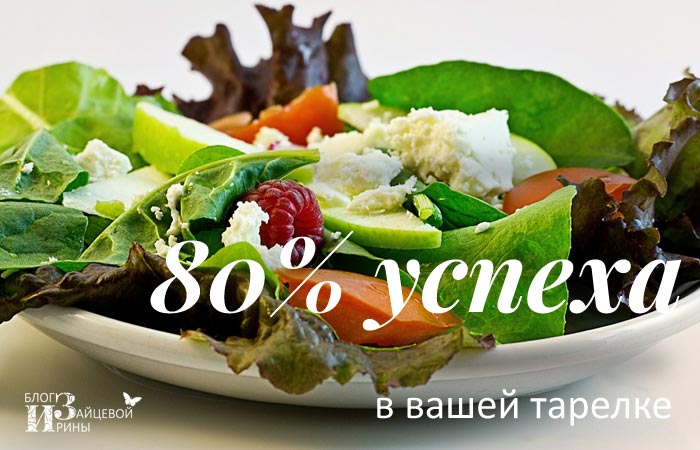
Vitamins, minerals and more...
Many of you will object to me that restriction of carbohydrates will lead to restriction in fruits, cereals. But it is in them, according to most people, that all vitamins are contained. I will disappoint you, because it is not so.
At present, the situation is such that all these products, which should contain a lot of vitamins, no longer contain even a third of the norm. This is due to the peculiarities of growing, processing and storing products. Unfortunately, all vitamins are hypersensitive to the chemicals that are used as fertilizers, and some minerals completely disappear from the soil after such treatment, which means they will not be in the plant.
As a result, we get just a sweet fruit, devoid of useful properties. In addition, fruits and cereals cannot boast of a large amount of fat-soluble vitamins, and vitamin B12 in plant foods does not exist at all.
So, by switching to the indicated nutrition, you will undoubtedly win in this difficult issue, since you will eat a large number of vegetables, which are certainly healthier than fruits, fresh meat, fish, poultry, high-quality cheeses, cottage cheese, butter and other products.
But even on such a diet, there is often a deficiency of vitamins and minerals, because animals are raised on impoverished pastures, if not raised in pens, and fish rarely swim freely in the sea, but are also raised in cages. In this case, I recommend high-quality vitamin complexes, but this is a topic for another article.
Today you learned about the basic principles of nutrition and diet for type 2 diabetes.
Remember that nutrition is already 80% success. Medicines, sports and other methods are not effective enough if you have not figured out your diet.
If you're unhappy with your diabetes, it's time to start getting rid of it today!
With warmth and care, endocrinologist Lebedeva Dilyara Ilgizovna, author of the blog Sugar is normal!
I thank Dilara for information about the basic principles of diet and nutrition in type 2 diabetes.
And for the soul, we will listen today Tango from the movie Scent of a Woman . Great music and great actors.
see also











